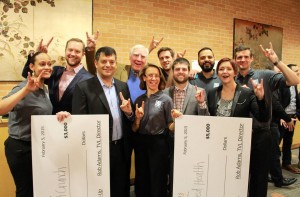Originally posted on Forbes by Lisa Seacat DeLuca
Software engineer. Inventor. Mother of toddler twins. Nerd puller of late night coding jags. And, at 32, the most prolific female inventor at IBM with more than 150 patents in areas such as mobile, data, and cloud, to my name.
I’m one of the faces of innovation at IBM. One of my patents is U.S. Patent #8,694,777: Securely identifying host systems, which enables more secure identity control in cloud computing environments.
The patent was among 7,534 patents filed by IBM last year, making it the first company to exceed 7,000 patents in one year and marking the company’s 22nd consecutive year as worldwide patent leader.
Patents are key to my company’s strategy, not just because they’re proof of unique ideas, but because they’re the platform for the future inventions that drive the success of our clients, business and industry. Because none of us work alone. Innovation comes from the spark of an idea. Yet, we all build on top of the innovations that other tinkerers before us have come up with.
As I said in my TED@IBM talk last fall, “The speed of invention in the future will be as fast as we can dream up ideas. We’ll be able to use each other’s innovations to test drive ideas and find inspiration to keep solving everyday problems.”
Which is why we’re all encouraged at my company to become inventors and why there is such a buzz around creativity.
As a 22-year-old new hire at a large multinational company, I was definitely intimidated when it came to getting started. But the excitement of becoming an innovator, and the contagious feeling I got from my colleagues that I could do just that quickly turned me into one. I was hooked. There’s not a better feeling than coming up with creative solutions to real problems that other people find valuable.
And in fact, all of us can experience that feeling these days. With open source, crowd funding, and easy-to-use apps for developing software and electronic gadgets, we’re seeing a massive leveling of the playing field when it comes to innovation. Staying curious, supporting other makers, and taking a risk on our ideas will make those napkin ideas a reality. I encourage everyone to share their ideas with the world.
I’m an inventor, a brainstormer, a tinkerer. And I’m proud to be part of one of, if not the, most innovative companies in the world. The creativity of my colleagues inspires me everyday. And the wave of inventiveness online sparks my imagination. More innovation will help all of us have more productive, more fulfilled lives. And it’s just plain fun.
Watch Lisa Seacat DeLuca’s TED@IBM video.
Lisa Seacat DeLuca is an IBM Master Inventor and Mobile Software Engineer and member of the Texas MSTC Class of 2010



